Whether you are looking for teaching tips for Women’s History Month, Pride Month, or just a regular inclusive Tuesday in your classroom, we’ve got resources and suggestions to keep your classroom thriving!
Teaching Women’s History
When we arrive at March, we finally talk about teaching Women’s History. Even though it’s something we should integrate all year long (like Black History!), we rush to gather lesson plans in the busiest month of the year.
Well, here are ideas you can use year-round to get your students talking and thinking.
Honestly, I used to wonder what the point was in teaching Women’s History. Didn’t my students understand the accomplishments that women have made and the obstacles they still face?
Teaching women’s history out of a sense of celebration of the past is one thing, but there’s much more to understand.
The other day, I was at Home Depot, my cart full of wood and tools to build raised beds for my garden, and a guy cuts me off. He cut across my path, but I would have slammed into him if I hadn’t stopped. So I stopped.
So what?
Men are socialized to take up space in the world, and women are socialized to shrink back (lose weight, sit up straight, be quiet). Women, if you doubt this, try this: Walk down the sidewalk or down the grocery store aisle. Do not move when a man comes toward you.
Collisions abound because men are so used to women moving! Or, as my Home Depot example illustrates, women are invisible to them.
You came here for teaching ideas, and they’re coming–I promise! Before I shared those, I wanted to illustrate why I think it’s important to create intentional space for women in the curriculum.
7 Ideas for Teaching Women’s History
1. Add more books by women to your classroom library
Step one is to create a diverse classroom library. When students read books by and about women, they empathize with their stories. Teaching Women’s History doesn’t always have to be an active endeavor. Sometimes, access to books is enough.
Recently, I helped create a list of book recommendations with twenty amazing English teachers. All of the recommendations share stories of amazing women! Check out the list here.
2. Talk history… reexamine your assumptions
Put the “history” in “Teaching Women’s History”! Share an overview of Women’s History with your students. Then, zoom in on the fight for the 19th amendment. I also love Michelle Mehrtens’ video, The Historic Women’s Suffrage March on Washington.
Cross-curricular work achieves this purpose, too. Here’s a list of ideas from the New York Times’ Learning Blog.
3. Incorporate more voices–history is happening now!
Use TED talks to highlight women’s efforts to promote social and political equality around the globe. Here are some TED talks I love for this purpose:
“A Woman’s Fury Holds Lifetimes of Wisdom,” by Tracee Ellis Ross
“Me Too is a Movement, Not a Moment,” by Tarana Burke
“How empowering women and girls can help stop global warming,” by Katharine Wilkinson
4. Stop apologizing. Say “thank you”, instead.
Women apologize. A lot. Studies have shown that women apologize much more than men, leading others to doubt our confidence and expertise.
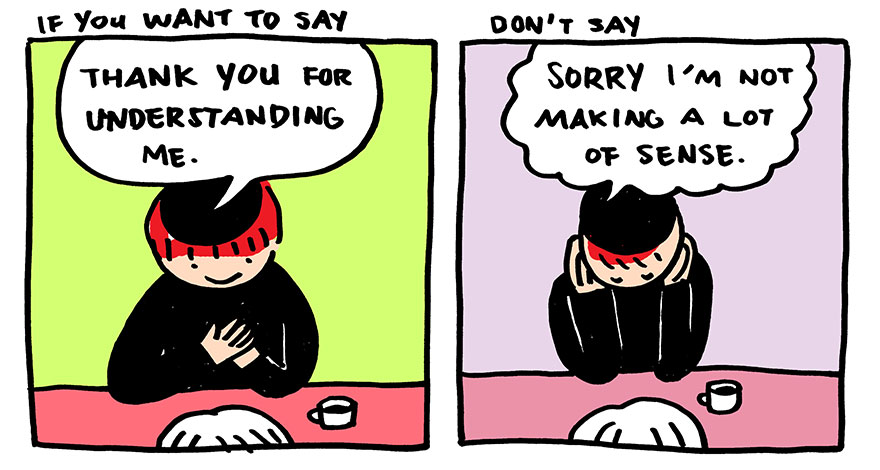
One example from BoredPanda’s great post on the topic!
First, ‘sorry’ covers a huge range of lexical meanings in American English. We’ve replaced our grandparents’ usage of “Pardon me” and “Excuse me” with “Sorry!”. Unlike French (“dommage!”) and German (“schade!”), we don’t really have a special word to convey that we are sorry for someone else vs. sorry because we’ve done something wrong.
Consider this snippet:
“I’m sorry the game got cancelled.”
“It’s not your fault.”
Even when you’re using the word “sorry” to express hurt on behalf of someone else, there’s still a piece of the linguistic pie that feels to the listener like you want blame. Do you?
I’m asking you to teach by example. Stop apologizing for things that aren’t your fault and reframe your concern for others as “thanks.”
5. Build empathy – Women’s History Posters
Hanging up photographs or posters is an easy way to incorporate Women‘s History. Seeing a face is powerful. Your students can develop empathy just by being exposed to the faces of some amazing women!
I worked with artist Lily Chan to create this set of Women’s History Posters. Each one includes a thought-provoking and inspiring quote. Have your students research more about these women or even draw their own posters to add to the collection!
6. Talk about female characters in stories (books, movies, music)
Whenever we read books for the YA Café Podcast, we ask ourselves about the portrayal of female characters. Are they tokenized? Are they all merely Marys or Mary Magdalenes? Or are we really getting a diverse picture of what it means to be girls and women?
I found two great pieces lately that tackle representation.
Teen Vogue (they are killing it, by the way!) published an article called “The Mean Girls Musical Cast is Redefining What it Means to Be a Strong Woman.” This article looks in-depth at the portrayal of women in one piece of pop culture. Share this literary analysis with your students–they could then use the lens with a piece of pop culture they enjoy.
I also enjoy the TED talk “The Story Behind Marvel’s First Muslim-American Superheroine” by G. Willow Wilson. Wilson writes Ms. Marvel, starring teenager Kamala Khan. Kamala realizes that she can be herself without representing all things to all people. Kamala’s a teenager, so our students will engage with her story and relate to her.
7. Keep up the good work, all year round!
Bring women to the core of your curriculum. It’s an English teacher‘s challenge because our canon hasn’t treated women with respect and admiration, pretending instead that there were no women writing at such-and-such time period. That’s false. We just have to dig.
Here are six women writers to highlight in your American Literature curriculum.
Teaching LGBTQ+ Rights
When my friend, Matt, from Surviving Social Studies shared his LGBTQ Painting Recreation, I knew I wanted to share it with you. In this collaborative project, students work together to recreate an inspirational painting advocating for LGBTQ+ civil rights.
I love this idea! It’s touching to ask students to each complete one piece of this painting since their actions on this earth work cumulatively towards peace and equality.
There’s plenty of flexibility with this resource, too – you could have students fill the white space with thoughts and reflections on this topic.
As you start teaching LGBTQ+ rights, remind students that they don’t have to identify with this marginalized group to have “skin in the game.”
This is a great opportunity to introduce the concept of allyship: working to protect and defend a marginalized group, even if you yourself are not a part of it.
Here’s a great video to get you started: How to Be a Good Ally by Ahsante the Artist (6:55)
Final thoughts:
What are your favorite resources for teaching Women’s History and/or LGBTQ+ Rights? Let me know in comments!
Happy teaching!


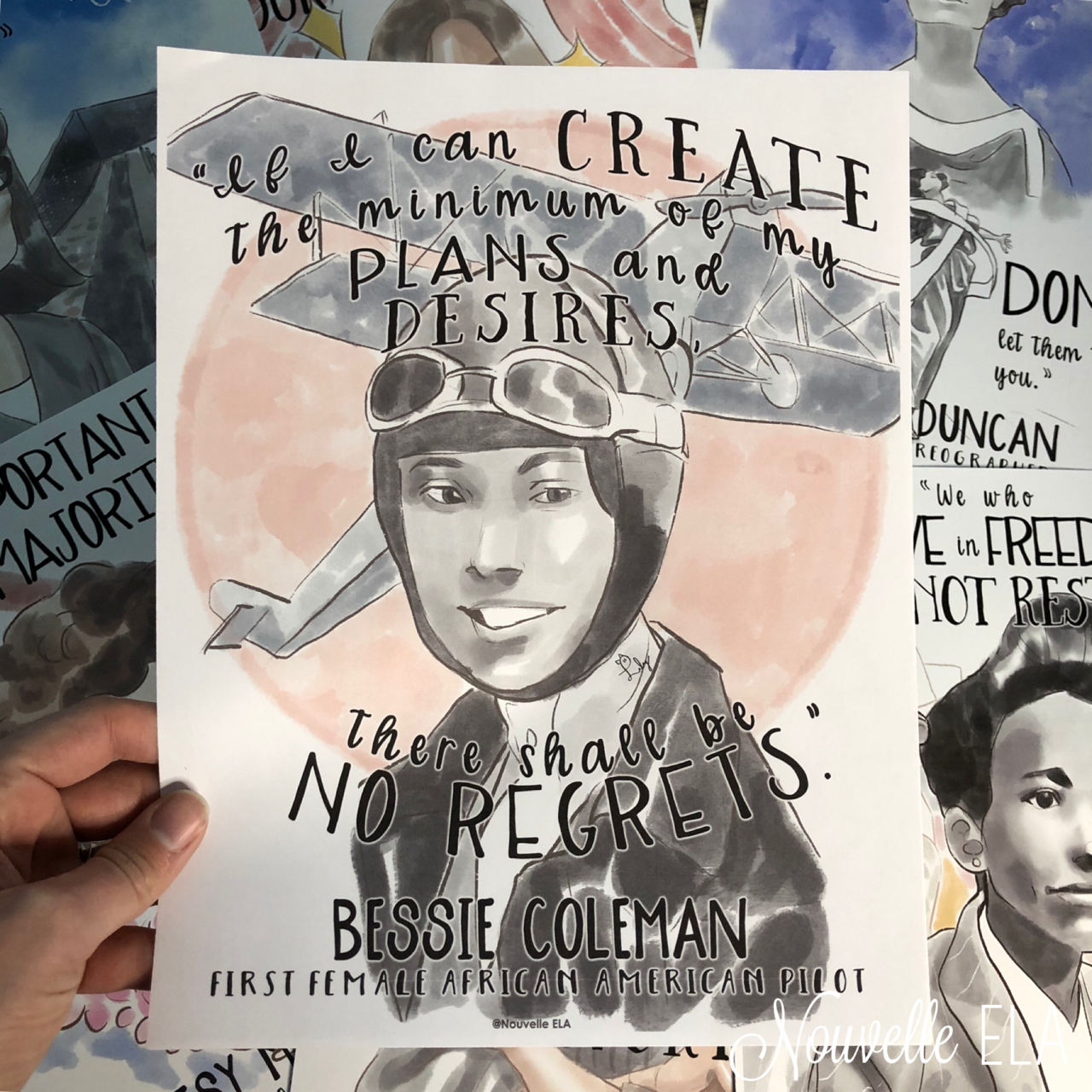

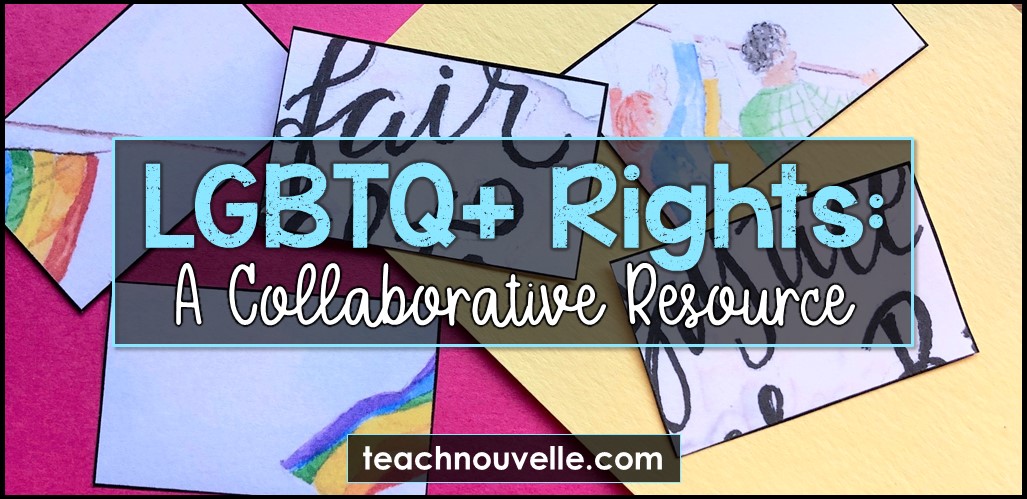

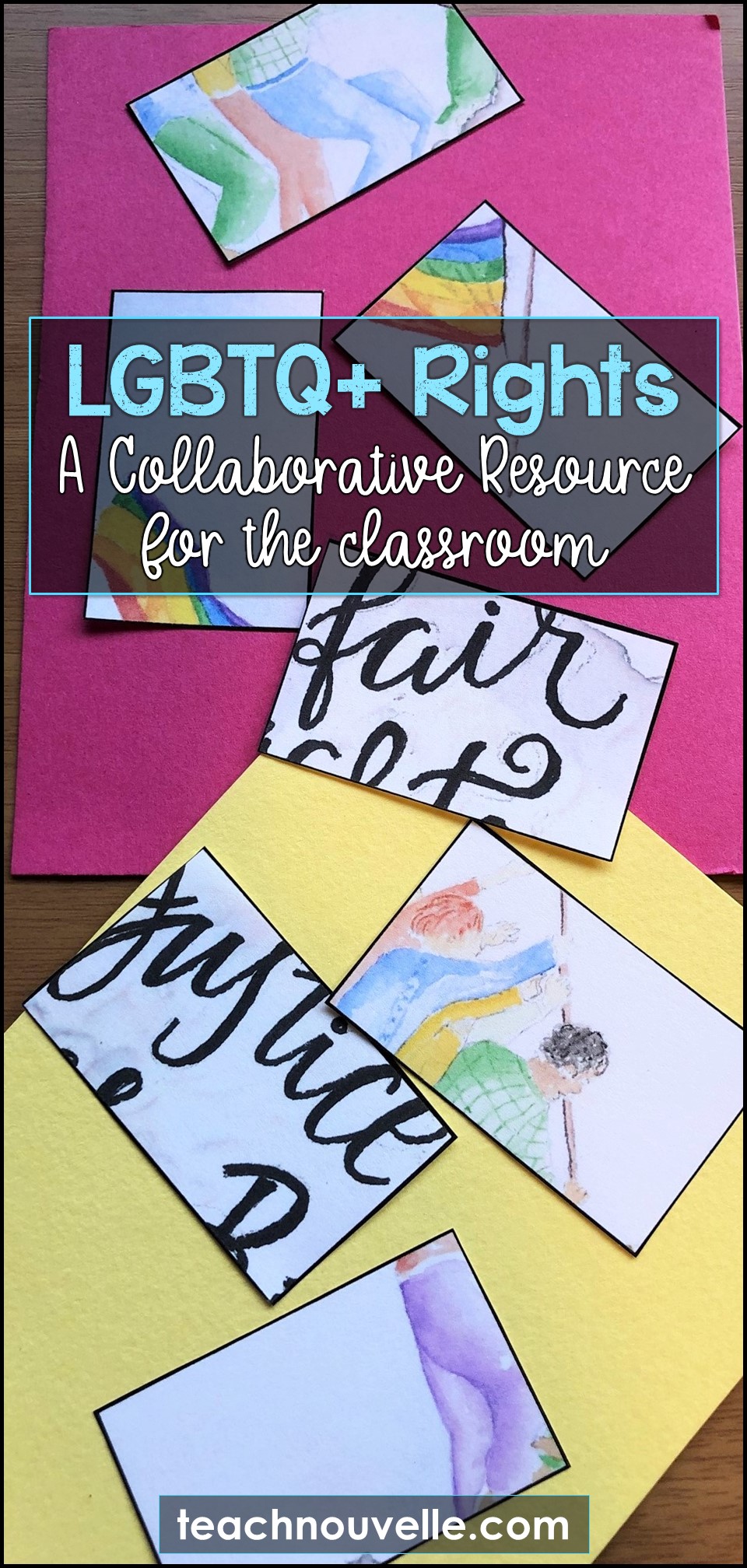
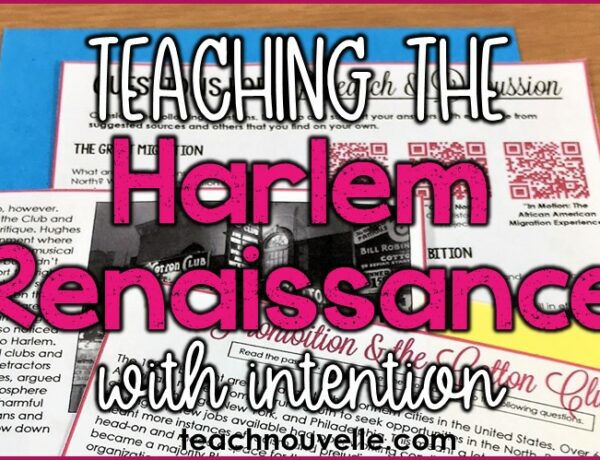

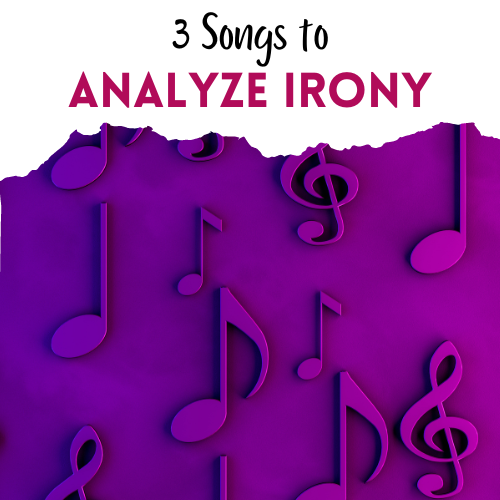
No Comments